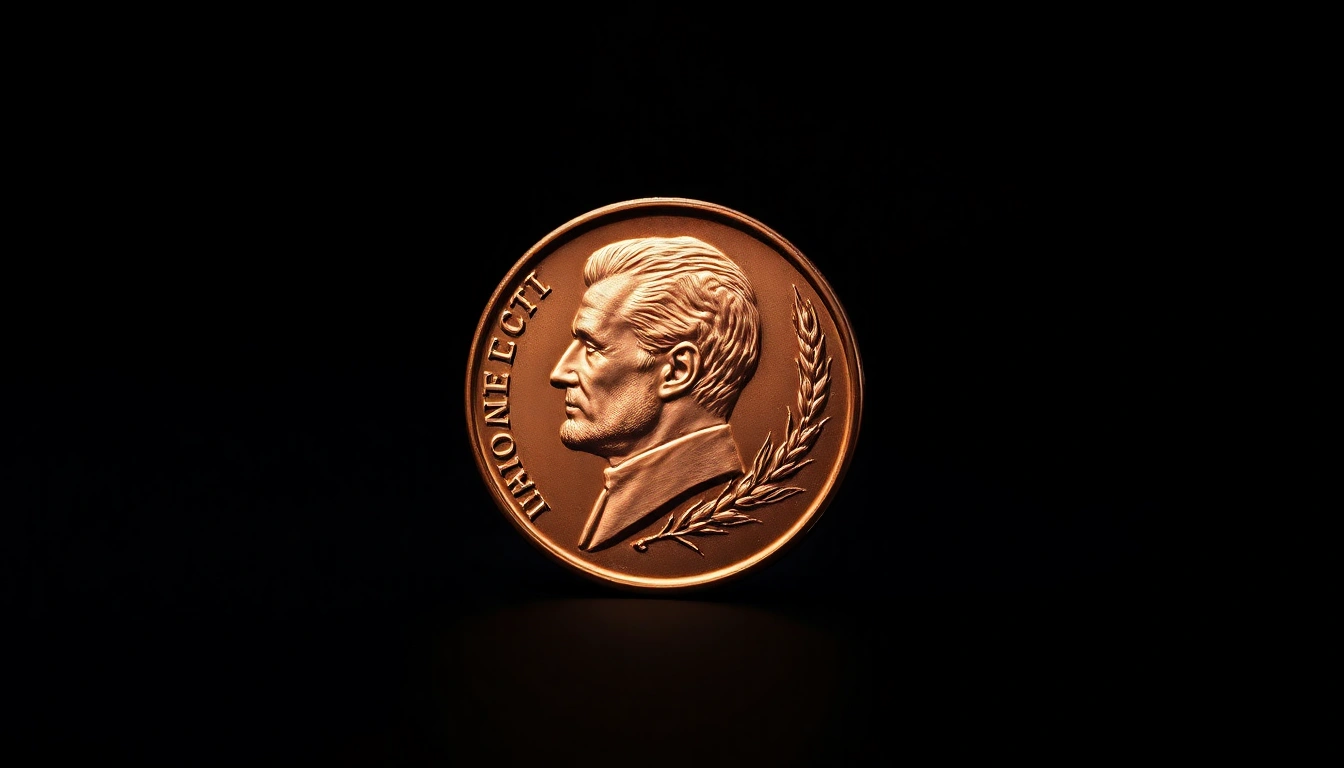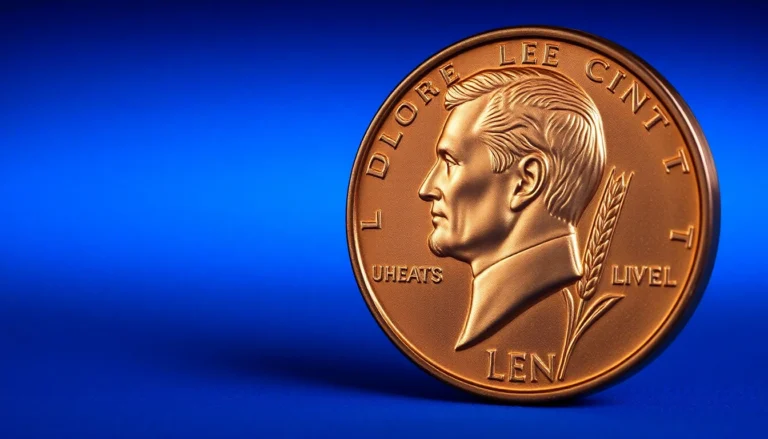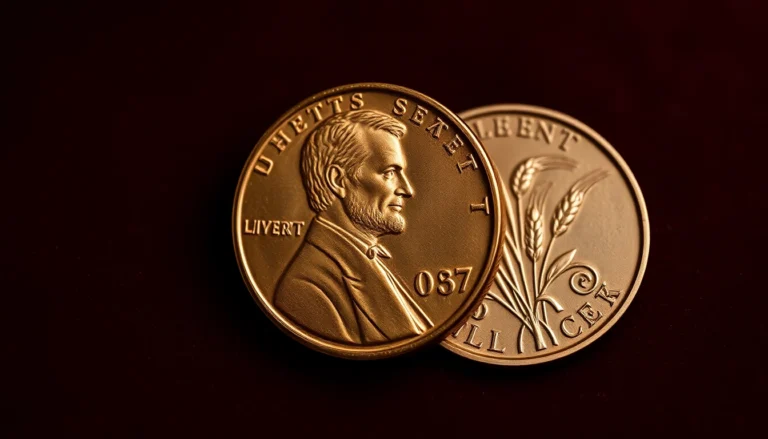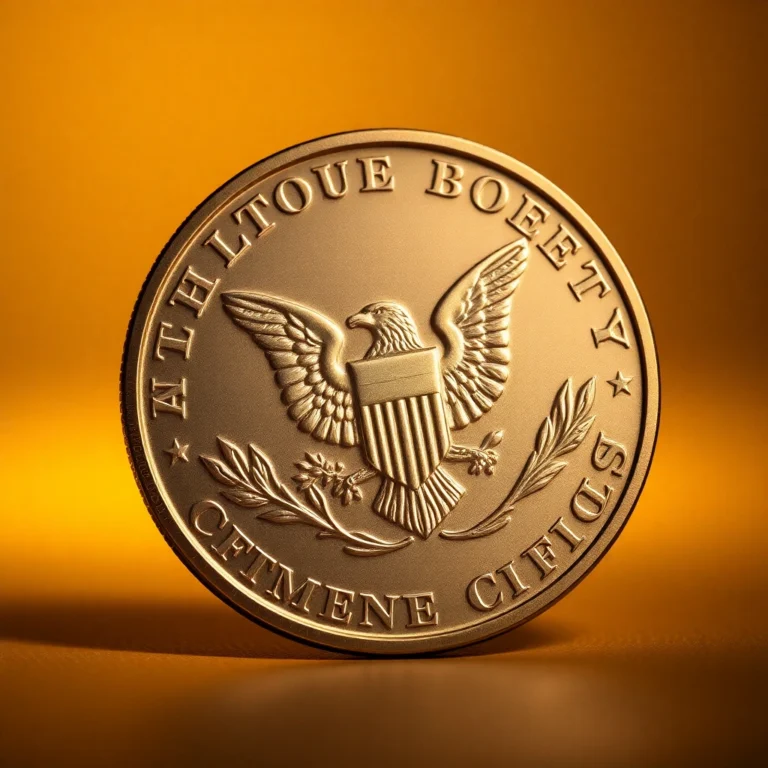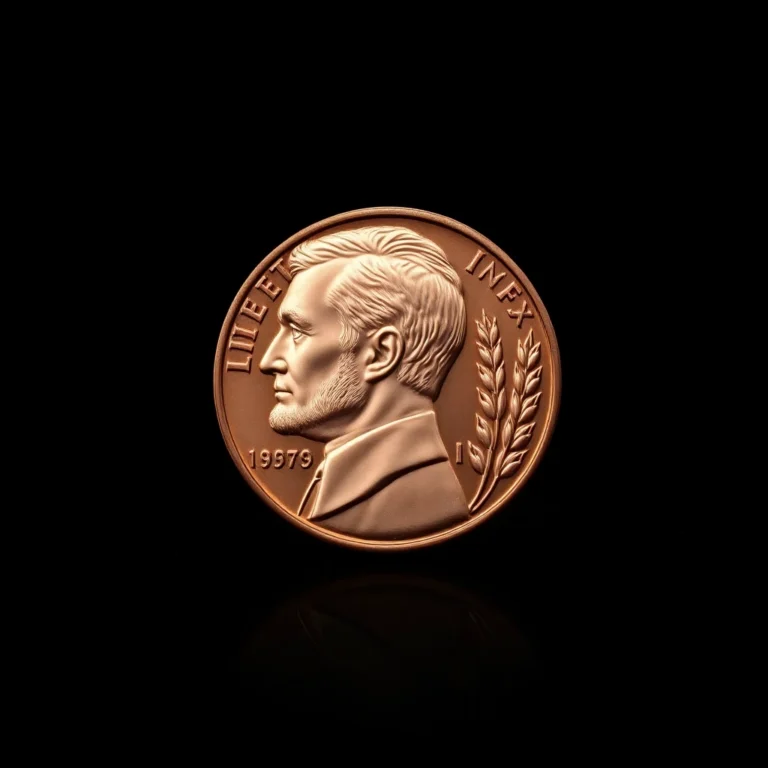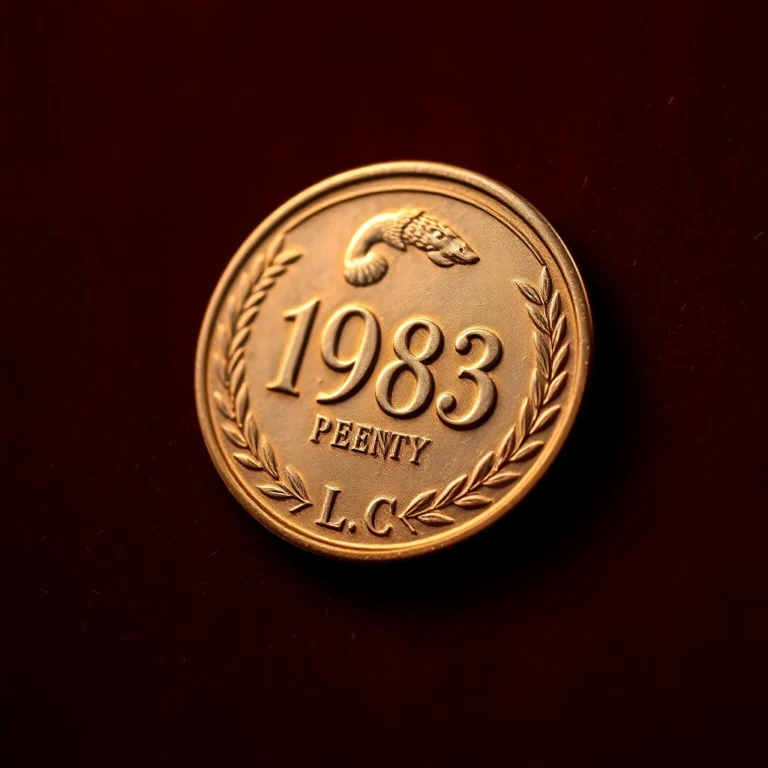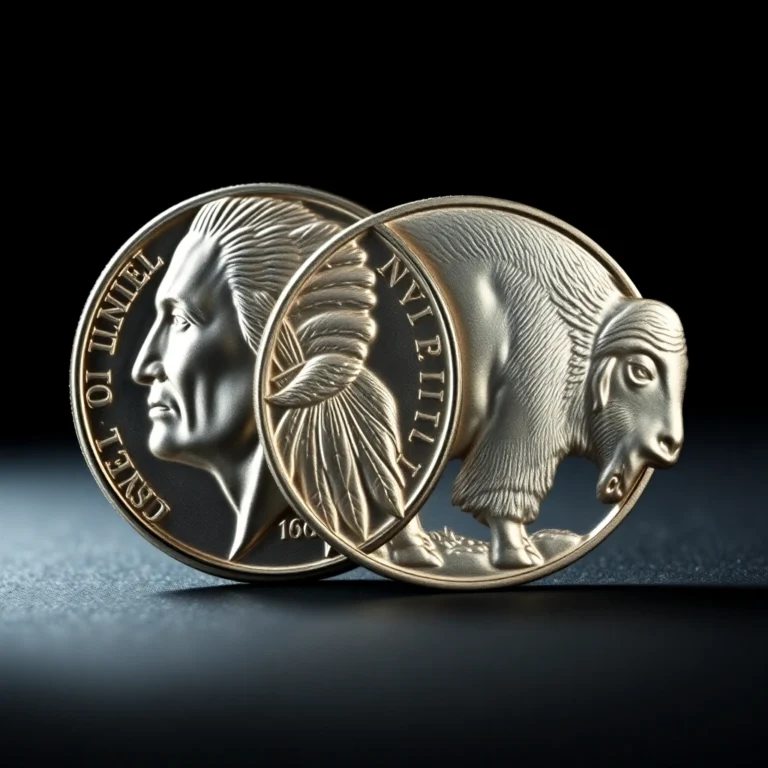Imagine holding a piece of American history in your hands, a coin that echoes the whispers of a bygone era. The Lincoln Wheat Penny, minted from 1909 to 1958, is more than just a penny; it’s a beloved cornerstone of numismatics. For collectors, this penny stands as a testament to the artistry and history of early 20th-century America. In this article, you’ll discover five indispensable tips for building a complete collection of these remarkable coins.
Whether you’re a seasoned numismatist or a curious novice, these strategies will enhance your collecting journey. You’ll learn how to identify key dates, understand grading essentials, and appreciate the subtle nuances that make each penny unique. Collecting Lincoln Wheat Pennies is not just about amassing coins; it’s about curating a tangible legacy. Stay tuned to uncover the secrets that could unlock the value and rarity hidden within your collection.
1. 1909-S VDB Lincoln Wheat Penny
The 1909-S VDB Lincoln Wheat Penny is a cornerstone of any serious Lincoln cent collection, celebrated for its rarity and historical significance. Minted in San Francisco, the 1909-S VDB is the first year of the Lincoln cent series, featuring the initials of the designer, Victor David Brenner, on the reverse. This coin is not only a piece of American history but a treasure sought by collectors worldwide. 🪙
Key identifying features include the “S” mintmark below the date on the obverse and the “V.D.B.” initials at the bottom of the reverse. Due to its limited mintage of just 484,000, the 1909-S VDB is one of the most sought-after coins in U.S. numismatics. While there are no significant varieties or errors for this coin, it remains a top priority for collectors due to its scarcity and historical value.
| Grade | Value Range |
|---|---|
| Good (G-4) | $800-$1,000 |
| Very Good (VG-8) | $1,000-$1,200 |
| Fine (F-12) | $1,200-$1,500 |
| Very Fine (VF-20) | $1,500-$2,000 |
| Extremely Fine (EF-40) | $2,500-$3,000 |
| About Uncirculated (AU-50) | $3,500-$4,000 |
| Mint State (MS-60) | $4,500-$5,500 |
| Gem Mint State (MS-65) | $10,000-$12,000 |
2. 1914-D Lincoln Wheat Penny
The 1914-D Lincoln Wheat Penny stands as a cornerstone of any serious Lincoln cent collection. Minted in Denver, this coin is one of the most sought-after due to its low mintage of just over 1.1 million, making it a key date for collectors 🪙. Its rarity and significance in the series make it a prize for numismatists striving to complete a full set.
Key identifying features of the 1914-D include the distinctive “D” mint mark below the date on the obverse. It’s important to be vigilant for counterfeits, as this penny is often altered from the more common 1944-D. Known varieties or errors for this year are minimal, but always check for the clarity of the mint mark and date to ensure authenticity.
| Grade | Value Range |
|---|---|
| Good (G-4) | $200-$250 |
| Very Good (VG-8) | $300-$400 |
| Fine (F-12) | $450-$550 |
| Very Fine (VF-20) | $750-$900 |
| Extremely Fine (EF-40) | $1,200-$1,500 |
| About Uncirculated (AU-50) | $2,000-$2,500 |
| Mint State (MS-60) | $3,000-$4,000 |
| Gem Mint State (MS-65) | $20,000-$25,000 |
3. 1924-D Lincoln Wheat Penny
The 1924-D Lincoln Wheat Penny is a captivating piece of numismatic history, minted during a time when America was transitioning into a modern society. Struck at the Denver Mint, this penny is notable for its low mintage of just over 2.5 million, making it a sought-after treasure for collectors. 🪙 This coin is a key date for those aiming to complete a Lincoln Wheat Penny set.
Key identifying features include the classic wheat ears on the reverse and the mint mark “D” for Denver located below the date on the obverse. Collectors prize this coin for its historical significance and its role in the timeline of U.S. coinage.
While no major varieties or errors are widely recognized for the 1924-D Penny, variations in strike quality are common, with sharper strikes being significantly more valuable. Below is a table showcasing the current market values for this coin:
| Grade | Value Range |
|---|---|
| Good (G-4) | $30-$40 |
| Very Good (VG-8) | $50-$60 |
| Fine (F-12) | $75-$100 |
| Very Fine (VF-20) | $150-$200 |
| Extremely Fine (EF-40) | $300-$400 |
| About Uncirculated (AU-50) | $500-$600 |
| Mint State (MS-60) | $1,000-$1,200 |
| Gem Mint State (MS-65) | $5,000-$7,000 |
4. 1931-S Lincoln Wheat Penny
Among the most coveted coins for Lincoln Wheat Penny enthusiasts is the 1931-S Lincoln Wheat Penny. Struck during the Great Depression, this penny is known for its notably low mintage of only 866,000, making it a key date for collectors aiming to complete their series. 🪙 The scarcity of these coins has propelled them to a prominent position in numismatic circles.
Key identifying features of the 1931-S Lincoln Wheat Penny include the distinct ‘S’ mintmark located below the date on the obverse side, indicating its origin from the San Francisco Mint. Collectors should also be aware of its sharp wheat stalk design on the reverse, which can show signs of wear even in higher grades.
While this issue does not have major varieties, collectors should be cautious of counterfeits due to its high value. Authentic coins should exhibit the San Francisco mint’s characteristic strike quality and detail.
| Grade | Value Range |
|---|---|
| Good (G-4) | $70-$100 |
| Very Good (VG-8) | $100-$150 |
| Fine (F-12) | $150-$250 |
| Very Fine (VF-20) | $250-$350 |
| Extremely Fine (EF-40) | $350-$500 |
| About Uncirculated (AU-50) | $500-$700 |
| Mint State (MS-60) | $700-$1,000 |
| Gem Mint State (MS-65) | $1,500-$2,500 |
5. 1955 Double Die Obverse Penny
The 1955 Double Die Obverse Penny is a legendary piece among numismatists, often referred to as the “holy grail” of Lincoln Wheat Pennies. This coin emerged from the U.S. Mint in Philadelphia, where a die misalignment during the minting process resulted in a striking double image on the obverse. Collectors can easily identify this rarity by the pronounced and clear doubling of the date and the inscription “LIBERTY” and “IN GOD WE TRUST.” This error gives the coin its distinctive and sought-after look. 🪙
While no significant varieties of the 1955 Double Die Obverse exist, the coin itself is an error that has captivated collectors for decades. Its value is heavily influenced by its condition, with well-preserved examples commanding a premium in the market. Below is a table outlining the current value range for this iconic coin:
| Grade | Value Range |
|---|---|
| Good (G-4) | $1,000-$1,500 |
| Very Good (VG-8) | $1,600-$2,000 |
| Fine (F-12) | $2,100-$2,700 |
| Very Fine (VF-20) | $3,000-$4,000 |
| Extremely Fine (EF-40) | $4,500-$6,500 |
| About Uncirculated (AU-50) | $7,000-$10,000 |
| Mint State (MS-60) | $12,000-$15,000 |
| Gem Mint State (MS-65) | $25,000-$50,000 |
Embarking on the rewarding journey of building a complete collection of Lincoln Wheat Pennies involves five essential strategies: thorough research, strategic budgeting, networking with fellow enthusiasts, prioritizing condition, and ensuring authenticity. As an expert tip, consider attending local coin shows where you can not only find elusive pieces but also gain insights from seasoned collectors.
Currently, the numismatic market reflects a steady demand for high-grade and rare Lincoln Wheat Pennies, with an upward trend in value, especially for key dates and mint marks. This makes now an opportune moment to invest in these historical treasures.
Remember, coin collecting is more than a hobby; it’s a gateway to the past, a bridge across generations, and a testament to the timeless allure of history captured in metal. As you cultivate your collection, you’re not just amassing coins; you’re preserving a legacy, one penny at a time. Let your passion for collecting inspire others, and watch your collection flourish.
FAQs
How does the condition of a Lincoln Wheat Penny affect its value?
The condition, or grade, of a Lincoln Wheat Penny significantly impacts its value. Coins in better condition, especially those with minimal wear and in higher grades like MS-65 or MS-70, tend to be more valuable. Collectors often use the Sheldon Scale, which ranges from 1 (Poor) to 70 (Perfect), to assess and communicate a coin’s condition.
What are some tips for authenticating a Lincoln Wheat Penny?
To authenticate a Lincoln Wheat Penny, examine key features such as the thickness of the lettering, the details in Lincoln’s portrait, and the wheat ears on the reverse. Use a magnifying glass to check for any inconsistencies or signs of tampering. Consulting with a professional grading service can also provide assurance of authenticity.
What is the best strategy for starting a Lincoln Wheat Penny collection?
Begin by setting a clear goal, such as completing a year set or focusing on key dates and mint marks. Start with more common and affordable coins, and gradually acquire rarer pieces as you become more familiar with the series. Using a coin album specifically designed for Lincoln Wheat Pennies can help organize and track your collection.
Why are Lincoln Wheat Pennies historically significant?
Lincoln Wheat Pennies, minted from 1909 to 1958, are noteworthy as the first U.S. coin to feature a president’s portrait. They were introduced to commemorate Abraham Lincoln’s 100th birthday and have become a symbol of American coinage history. The series also reflects key historical events, such as changes in metal composition during World War II.
What are some common varieties or errors found in Lincoln Wheat Pennies?
Lincoln Wheat Pennies are known for several popular varieties and errors, such as the 1909-S VDB, the 1914-D, the 1922 No D, and the 1955 Doubled Die Obverse. Collectors often seek these rare finds, which can add unique value and interest to a collection. It’s important to research and learn how to identify these varieties to enhance your collection.
